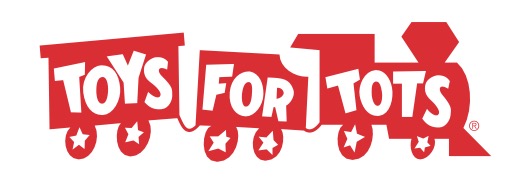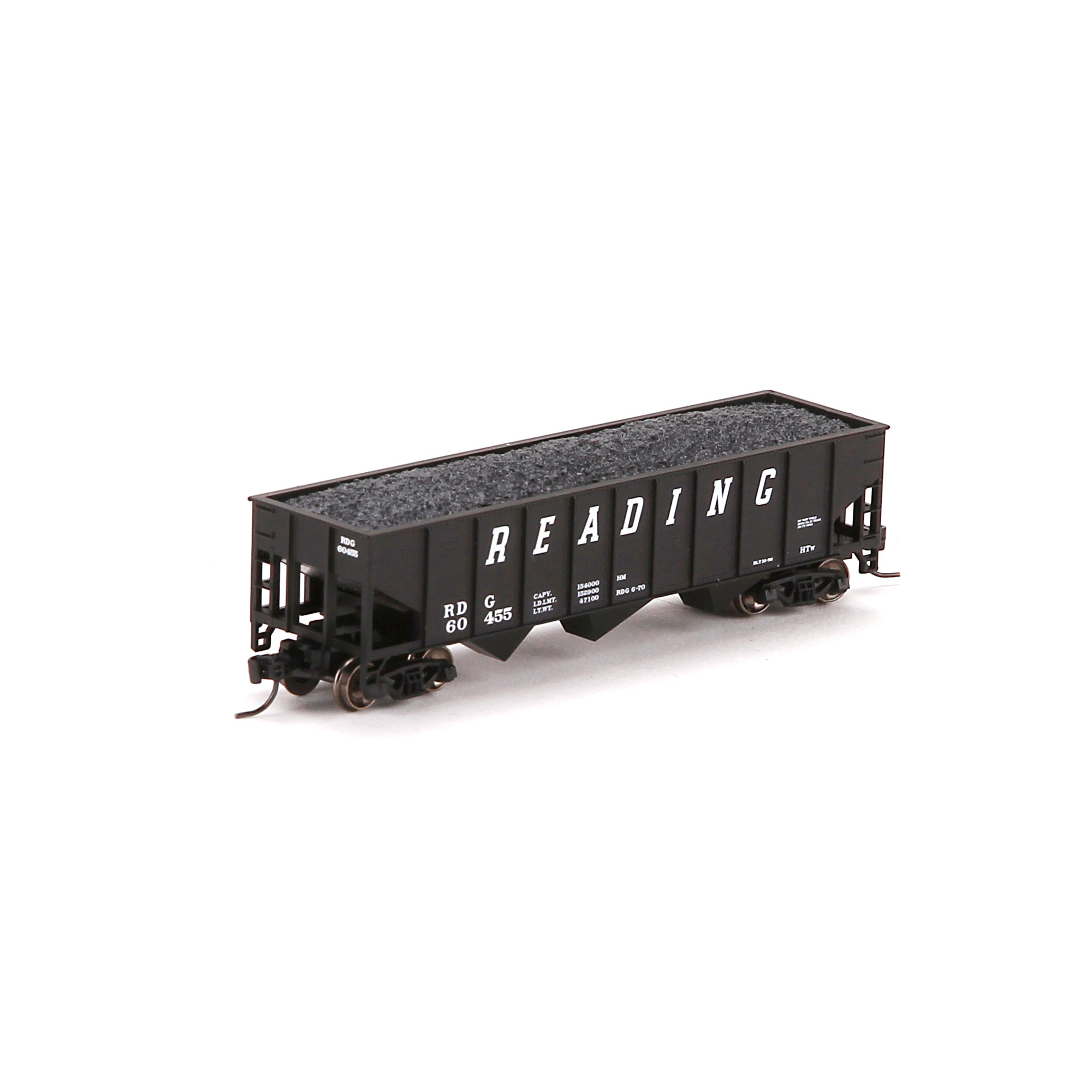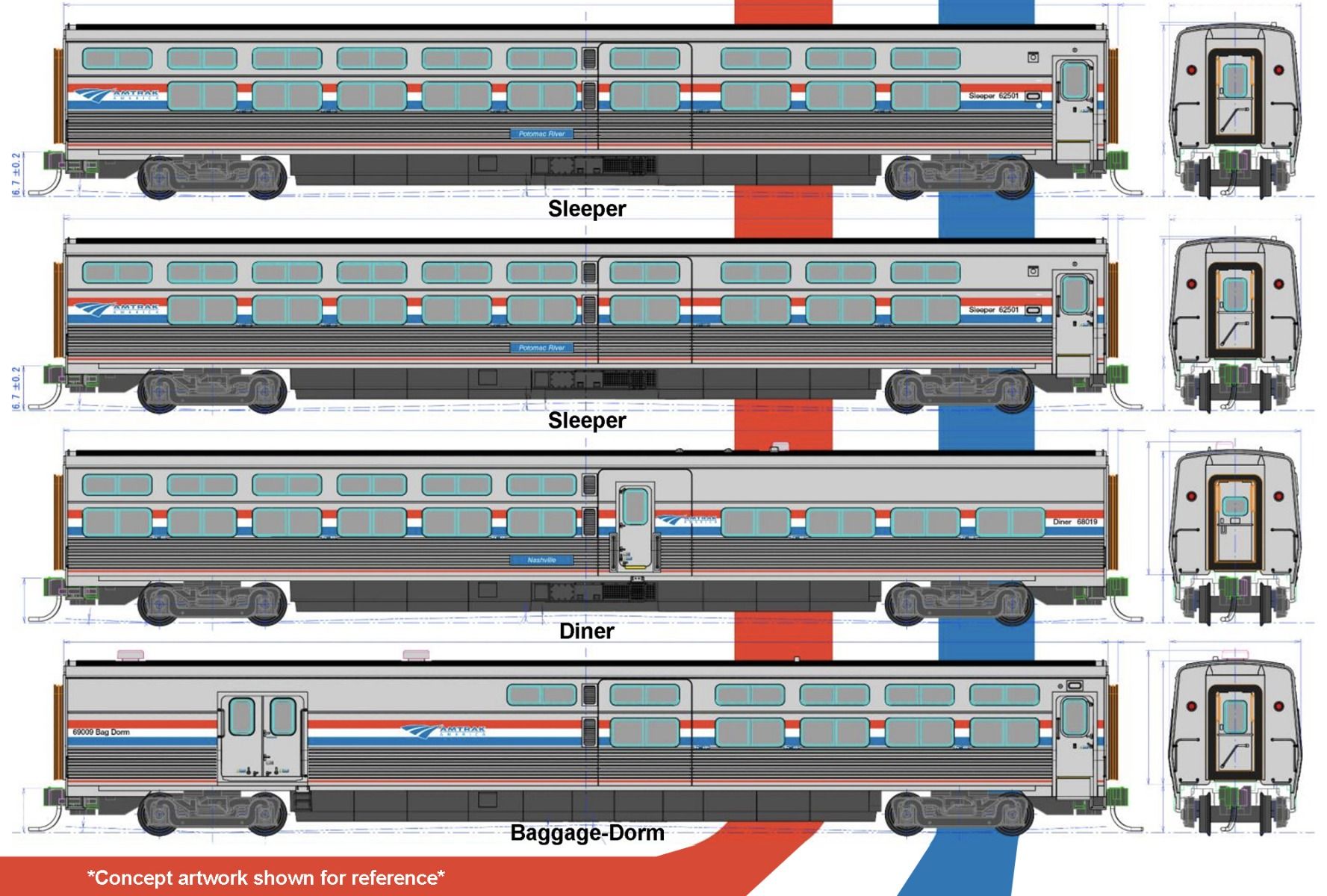Specific Item Information: Operation Toy Train operates a special annual collection train. Each year, the train collects over 25,000 donated toys for the U.S. Marine Corps Reserve Toys for Tots Foundation, whose primary goal is, through the gift of a new toy, help bring the joy of Christmas and send a message of hope to America's less fortunate children. www.OperationToyTrain.org • www.ToysForTots.org . Plaques require modeler installation. 10% of all proceeds will be donated to the Toys for Tots Foundation
Road Numbers: DRRV 1775, 1947 & 2009
Road Numbers: DRRV 1775, 1947 & 2009
Prototype History: While the 40-foot boxcar was a standard design, and it did come in different setups depending on the type of freight being transported, it was not large enough for efficient mass commodity transportation. The 50-foot boxcar made its first appearance in the 1930s and steadily grew in popularity over the years, which further improved redundancies by allowing for even more space within a given car. Today, the 50-footer remains the common boxcar size. After the second world war ended, and steel became once again readily available, steel became the go-to choice for construction of boxcars. Pullman Standard and ACF were some of the most prolific builders of these cars.
These cars came in many variations. For instance, double-doors became practical for large/wide loads, end-doors useful for very large lading such as automobiles, and interior tie-down equipment was helpful in keeping sensitive products from being damaged in-transit. In 1954 the Santa Fe developed its "Shock Control" (and later "Super Shock Control") technology for new boxcars with upgraded suspension systems to further improve the ride-quality and reduce the chance of damaging freight.
In the 1960s, the flush, "plug" style sliding door was introduced as an option that provides a larger door to ease loading and unloading of certain commodities. The tight-fitting doors are better insulated and allow a car's interior to be maintained at a more even temperature.
These cars came in many variations. For instance, double-doors became practical for large/wide loads, end-doors useful for very large lading such as automobiles, and interior tie-down equipment was helpful in keeping sensitive products from being damaged in-transit. In 1954 the Santa Fe developed its "Shock Control" (and later "Super Shock Control") technology for new boxcars with upgraded suspension systems to further improve the ride-quality and reduce the chance of damaging freight.
In the 1960s, the flush, "plug" style sliding door was introduced as an option that provides a larger door to ease loading and unloading of certain commodities. The tight-fitting doors are better insulated and allow a car's interior to be maintained at a more even temperature.
Road Name History: Toys for Tots is a program run by the United States Marine Corps Reserve which distributes toys to children whose parents cannot afford to buy them gifts for Christmas. It was founded in 1947 by reservist Major Bill Hendricks.
The Marine Toys for Tots Foundation, a 501(c)(3) not-for-profit public charity located in Triangle, Virginia, funds, raise funds for, and supports the program.
Toys for Tots began as a Los Angeles charitable effort in 1947. Major Bill Hendricks, USMCR, was inspired by his wife Diane when she tried to donate a homemade Raggedy Ann doll to a needy child but could not find any organization to do so. At her suggestion, he gathered a group of local Marine reservists, including Lieutenant Colonel John Hampton, who coordinated and collected some 5,000 toys for local children that year from collection bins placed outside Warner Bros. movie theaters. Jon B. Riffel also helped found the organization.Their efforts were successful. In 1948, a feasibility report for the Marines using it as a national public relations and recruitment tool was written by Maj. Donald G Clarke USMCR. Toys For Tots was launched as a national campaign. Hendricks used his position as director of Public Relations for Warner Brothers Studio to enlist celebrity support, as well as have Walt Disney and his animators design the red toy train logo.A theme song for the program was written in 1956 by Sammy Fain and Paul Francis Webster, and would be recorded by Nat King Cole, Jo Stafford, Peggy Lee, among others
The Marine Toys for Tots Foundation, a 501(c)(3) not-for-profit public charity located in Triangle, Virginia, funds, raise funds for, and supports the program.
Toys for Tots began as a Los Angeles charitable effort in 1947. Major Bill Hendricks, USMCR, was inspired by his wife Diane when she tried to donate a homemade Raggedy Ann doll to a needy child but could not find any organization to do so. At her suggestion, he gathered a group of local Marine reservists, including Lieutenant Colonel John Hampton, who coordinated and collected some 5,000 toys for local children that year from collection bins placed outside Warner Bros. movie theaters. Jon B. Riffel also helped found the organization.Their efforts were successful. In 1948, a feasibility report for the Marines using it as a national public relations and recruitment tool was written by Maj. Donald G Clarke USMCR. Toys For Tots was launched as a national campaign. Hendricks used his position as director of Public Relations for Warner Brothers Studio to enlist celebrity support, as well as have Walt Disney and his animators design the red toy train logo.A theme song for the program was written in 1956 by Sammy Fain and Paul Francis Webster, and would be recorded by Nat King Cole, Jo Stafford, Peggy Lee, among others
Brand/Importer Information: Micro-Trains Line split off from Kadee Quality Products in 1990. Kadee Quality Products originally got involved in N-Scale by producing a scaled-down version of their successful HO Magne-Matic knuckle coupler system. This coupler was superior to the ubiquitous 'Rapido' style coupler due to two primary factors: superior realistic appearance and the ability to automatically uncouple when stopped over a magnet embedded in a section of track. The success of these couplers in N-Scale quickly translated to the production of trucks, wheels and in 1972 a release of ready-to-run box cars.
Micro-Trains Line Co. split off from Kadee in 1990 to form a completely independent company. For this reason, products from this company can appear with labels from both enterprises. Due to the nature of production idiosyncrasies and various random factors, the rolling stock from Micro-Trains can have all sorts of interesting variations in both their packaging as well as the products themselves. When acquiring an MTL product it is very important to understand these important production variations that can greatly enhance (or decrease) the value of your purchase.
Micro-Trains Line Co. split off from Kadee in 1990 to form a completely independent company. For this reason, products from this company can appear with labels from both enterprises. Due to the nature of production idiosyncrasies and various random factors, the rolling stock from Micro-Trains can have all sorts of interesting variations in both their packaging as well as the products themselves. When acquiring an MTL product it is very important to understand these important production variations that can greatly enhance (or decrease) the value of your purchase.
Item created by: CNW400 on 2023-11-16 11:04:03. Last edited by CNW400 on 2023-11-16 11:07:15
If you see errors or missing data in this entry, please feel free to log in and edit it. Anyone with a Gmail account can log in instantly.
If you see errors or missing data in this entry, please feel free to log in and edit it. Anyone with a Gmail account can log in instantly.










